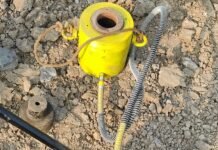“Nothing is complicated unless we consciously or unconsciously make it so. It’s just that some problems take more effort to understand, and some solutions demand more courage, discipline, and time to carry out.”
Contents
How Were the Five Traps Uncovered?
- High potential/fatality incidents despite all systems in place and working well
- Frustration: ‘What more can we do?’
- Analysis of incident reports. Going past the technical to ask: ‘why?’
- The cause was not lacking training or competence or ‘being stupid’
- Fear – and then four other ‘traps’
- After 100s of incidents from 7 industries, in 13 countries, one or more of the five behavioral traps is a contributing (even ultimate) factor
Everything should be perfect!
- The mental environment (bullying, “gung-ho”, non-cooperation, uncaring)
- The state of equipment/machines (old, difficult to use, unreliable)
- The job itself (too difficult, repetitive, insignificant)
- The systems (inductions, procedures, alarms, training)
- The people (not enough, not competent, unaware, ill)
- The operator (physically fit, mentally fit, ill, doesn’t care)
- The physical environment (hot, cold, cramped, dark)
What More Can We Do?
- Even if the physical environment, mental environment, the job, the systems, the people are near perfect…
- Even if our people are intelligent, competent, experienced, sensible people, well-meaning people…
- Even if managers, supervisors, and workers are trying our best to work safely and help others work safely…
- Even if our people are intelligent, competent, experienced, sensible, well-meaning people…
We still have incidents and accidents. Why?
We are human!
What More Can We Do to Stay at ZERO as long as possible?
Why do intelligent, competent, experienced, helpful people do the wrong thing, even when they know the right thing?
Why do people really get hurt?
The Five Behavioural Traps
- Lack of awareness
- Natural human fears
- Pressure (unreasonable, unintentional) from supervisors and workmates
- Lack of concentration – drifting off
- Wrongly diminishing the risks
How To Help People Overcome The Traps?
- Intellectually people understand – the get it
- Behavioral change is an emotional matter
- Lecturing (telling) does not work
- Enable people to see for themselves. You can ignore your supervisor or the safety adviser, but more difficult to ignore your own realization
- No need to persuade – just sow the seed
- Use workshops and then embed into the culture
What is behavioral safety?
(A simple but very powerful approach)
Holding detailed discussions of case studies in a workshop setting where people draw on their knowledge and experience to recommend safer ways of working.
then Exploring why we humans often don’t do what common sense, training or procedures tell us we should.
then Giving them the mental tools, including the courage to overcome those things that “make” us break the rules and override our own wisdom.
How much risk are you prepared to take?
If you feel chance the someone get hurt..
- Refuse to do the job and explain again why you think it’s unsafe?
- Ask for the team to do the risk assessment again?
- Pretend to be ill and try to get someone else to do that job?
- Keep quiet but be extra careful when doing the job?
Lack of awareness
- Become hyper-aware
- See, smell, and hear more
- Mentally compute and register what those signals mean
- Question more – even small things which are not usual
Unintentional, (Unreasonable) Pressure
- Not giving enough/clear instructions
- Not setting an example Shouting, swearing
- Body language indicating threats
- Unreasonable time pressures
- Asking people twice, how long they’ll be on a job
- Mocking, belittling, insulting, accusing, comparing
- Threatening a person’s job
Loss of concentration
- Fatigue, distractions, work stress, domestic stress, routine repetitive jobs. (Link to mental health)
Correct with:
- Organizational support
- Managers, supervisors, workers colleagues being aware of over-stress and taking action
- The individual: be aware when so fatigued or so
- worried you cannot function. Use ‘second mind’
- Own up, stop, talk to someone. You are not weak.
Wrongly diminishing the risk
- It’s only a small one’
- ‘I’m just…’ n‘It will only take five minutes’
- ‘It’s only two miles’
- ‘We’ve done it many times before’ n‘Be extra/very careful’
- ‘The other team did it okay’
What Not To Do
- Create fear – even unintentionally
- Being ‘heavy-handed’ with minor first aids
- Over-training (unnecessary, too long)
- Information overload (especially at inductions)
- Lecturing, hectoring, patronising
- Public humiliation
- Performance bonus linked to safety (except SMs)
- Unnecessary bureaucracy – reports
- Looking for ‘silver bullets’ – ‘magic wands’
Summary
- Keep it simple – no ‘models’ or complex diagrams or psychological theory
- Keep it short
- Keep at it, over and over and over, short sessions at intervals
- Build it into inductions, TB talks, meetings
- Make it interactive (no lectures) – make people think
- Reduce the slides and length of videos
- Set the example every time
- Think of the effect I am having on people
Credit:- Bill Robb






please share steel plant process safety
Sir, please send JHA’s for confined space, painting works
Sir, please send JSA’s for CIVIL work related
1) Excavation
2) Brick work
3) Shuttering & De shuttering
4) Base mix yard & Concrete mixing
5)Bar bending
6)Reinforcement
7) Soil back filling.
8) Loading and unloading
9) Manual Handling
10) Vehicles
Sir please describe about control Blasting safety. Legal documents and site activity
Sir, please send JSA’s for CIVIL work related
1) Excavation
2) Brick work
3) Shuttering & De shuttering
4) Base mix yard & Concrete mixing
5)Bar bending
6)Reinforcement
7) Soil back filling.
8) Loading and unloading
9) Manual Handling
10) Vehicles
http://rlsdhamal.com/downloads/sample-copy-of-jsa/